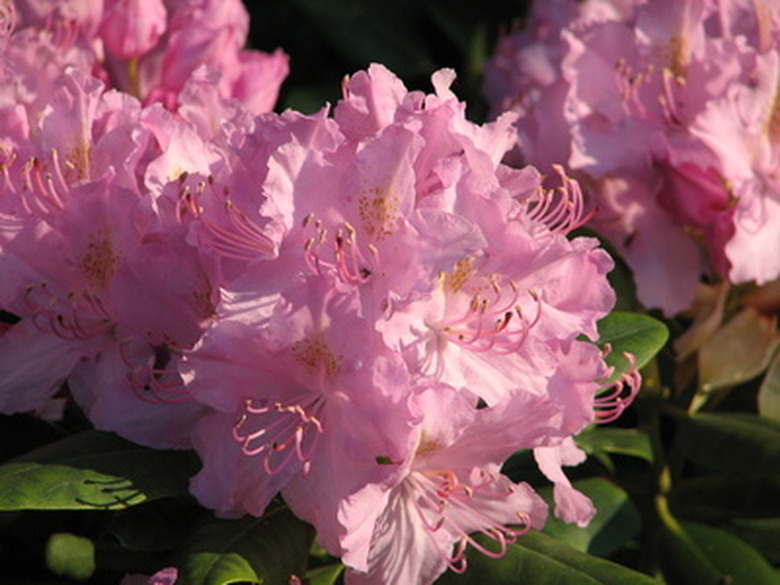The Treatment For Rhododendron Root Rot
Rhododendron plants (Rhododendron spp.) are susceptible to a variety of infections including the fungal disease Phytophthora root rot. Understand treatment and necessary care requirements such as a preference for dappled shade and identify causes of root rot like excessive moisture so that you can prevent the occurrence of this problem. Also, plant resistant varieties to lower the incidence of rhododendron root rot.
Root Rot Infection
Rhododendron root rot is a fungal infection that forms due to the fungus Phytophthora. This type of fungus is found in soil, most prevalently in areas with high moisture like clay soil, wet sites and poorly drained soil. Additionally, warmer soil temperatures exceeding 80 degrees F encourage the disease to develop, according to the Virginia Cooperative Extension.
- Rhododendron plants (Rhododendron spp.)
- Also, plant resistant varieties to lower the incidence of rhododendron root rot.
Symptoms
When root rot takes hold of rhododendrons, symptoms include wilting and drooping of leaves, discolored internal wood, rot present on roots, stunted growth and discolored stems that appear red or brown. In extreme cases, the entire plant may become brown. Though water-loving fungi cause root rot, well-drained soil with high moisture content may still experience disease; "feeder rootlets" may be affected in these cases. The entire root systems of rhododendrons are affected in areas of poorly drained soil and may die.
Prevention
Prevent rhododendron root rot by following proper care requirements for your plants. Rhododendrons thrive in filtered sunlight and experience damage by full sun exposure; plants in decline or stressed plants are more susceptible to diseases like root rot. Keep these flowering plants in acidic, well-drained soil with a pH of 4.5 to 6.0. For proper soil moisture levels, water during dry periods when soil is dry to the touch; saturate soil to a depth of 12 inches, but allow to dry out between waterings to avoid standing water. Protect from wind and add a layer of mulch to retain nutrients and to protect roots, as directed by the Clemson University Extension.
- When root rot takes hold of rhododendrons, symptoms include wilting and drooping of leaves, discolored internal wood, rot present on roots, stunted growth and discolored stems that appear red or brown.
- The entire root systems of rhododendrons are affected in areas of poorly drained soil and may die.
Treatment
To rid your rhododendron of root rot, treatment always includes removing and destroying infected plant parts and sanitizing any type of cutting tools between cuttings on one plant and from one plant to the next to prevent spread of infection. For dead plants, remove and replace with resistant varieties. Use fungicides to prevent infection and as an attempt to remove current infection. Fungicides may cause damage to rhododendrons or may not successfully treat a single plant; however, saturate the soil within 10 to 30 square feet surrounding infected and healthy plants with the fungicides mefenoxam, fosetyl-Al, metalaxyl or etridiazole. The larger the plant, the larger the square footage that needs to be treated. Since root rot moves easily from plant to plant, application of fungicides helps prevent spreading of fungi.
Resistant Varieties
Plant resistant rhododendrons to prevent the incidence of illness either initially or when replacing a dead plant. Root rot-resistant varieties include rhododendron hybrids 'Martha Isaacson', 'Professor Hugo de Vries' and 'Caroline'. Resistant species include Rhododendron delavayi, Rhododendron hyperythrum, Rhododendron poukhanense and Rhododendron quinquefolium, according to the Virginia Cooperative Extension.
- To rid your rhododendron of root rot, treatment always includes removing and destroying infected plant parts and sanitizing any type of cutting tools between cuttings on one plant and from one plant to the next to prevent spread of infection.
- Plant resistant rhododendrons to prevent the incidence of illness either initially or when replacing a dead plant.
